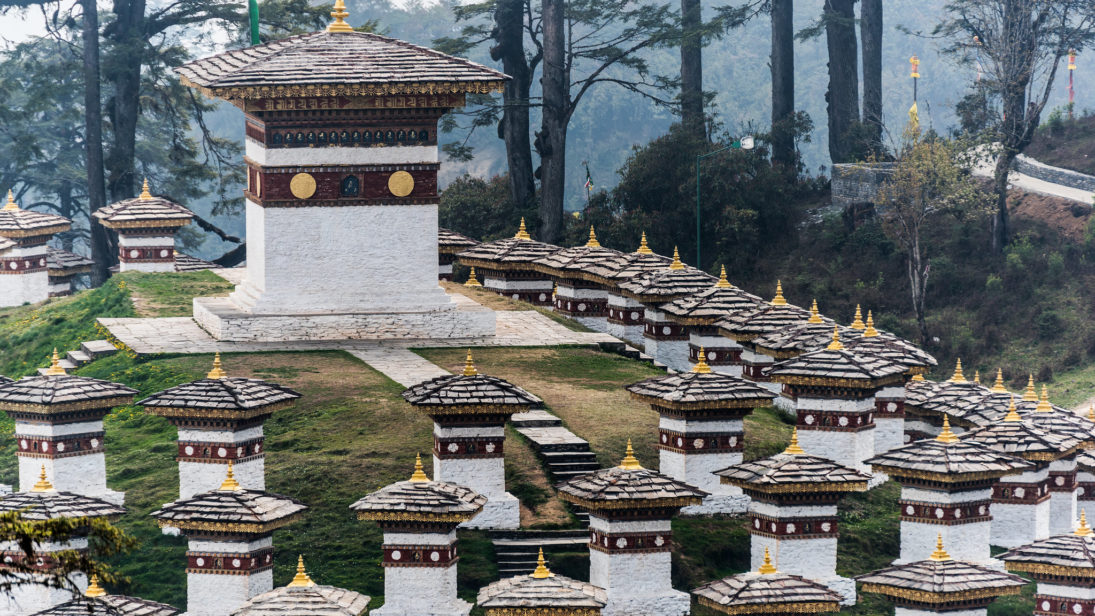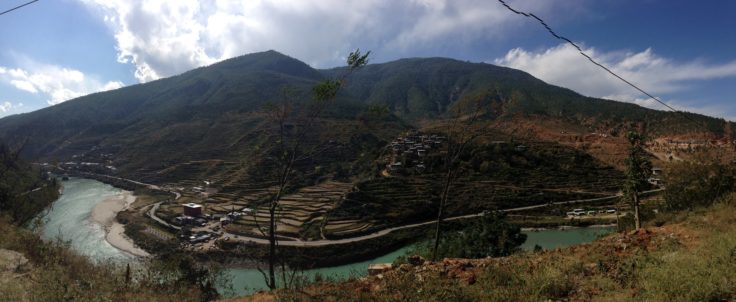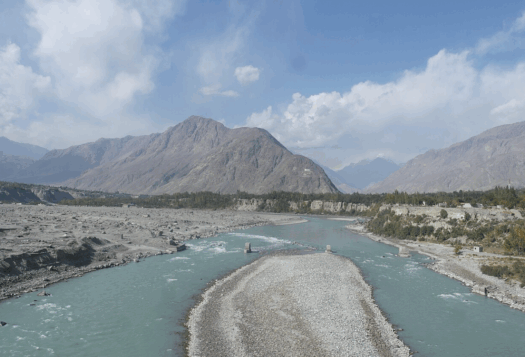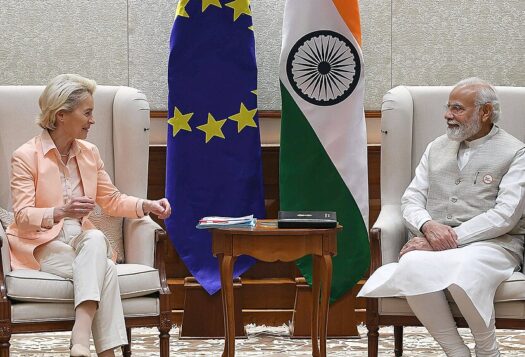
The Himalayan region with its vast mountain ranges, glaciers, and disparate valleys is no stranger to border incursions and tensions relating to lines of demarcation. Over the past year, many of these disputes have re-emerged across South Asia, playing out amidst the region’s high altitude, hostile geography, and poorly marked land borders. Since January, tensions have emerged between India and Nepal over the disputed Kalapani region, between China and Nepal over the Humla district bordering Tibet and Mt Everest, and most notably between India and China along the Line of Actual Control (LAC) in Ladakh. As the year comes to a close, it seems it is Bhutan’s turn to suffer the fate befallen by neighboring Nepal. The tiny Himalayan Kingdom (the site of the 72-day Doklam standoff in 2017) looks set to be drawn into an asymmetric dispute with China.
“There is no Chinese village inside Bhutan”
On November 20, India’s NDTV reported that Maxar Technologies, an American satellite operator, had discovered a new village in a valley along the Torsa River on October 28. The village, identified as Pangda, is located in western Bhutan, 2.5 kilometers (km) from the disputed frontier with China and in close proximity to the Sinche-La pass that has recently seen Chinese road construction. For New Delhi, the location is highly sensitive geopolitically as the village is located just 9 km south of Doka La, on the India-China-Bhutan tri-junction, where, in 2017, Indian troops intervened in Bhutan to prevent People’s Liberation Army (PLA) engineers constructing a highway from Tibet to the plateau.
The GeoEye-1 satellite also identified what Maxar termed as new “storage bunkers”, possibly for ammunition, in mountains near Pangda on the Chinese side of the border, 7 km from the Doklam Plateau. The images also identified a freshly constructed 9 km-long road leading from the village into Bhutan. The construction of Pangda village follows on from Chinese facilities built near the tri-juncture in 2019, which include a surface-to-air missile battery and heliport, all proximate to Doklam and Sikkim, though ostensibly within China proper. The Australian Strategic Policy Institute’s (ASPI) Nathan Ruser highlighted that on November 19 a CGTN producer, Shen Shiwei, inadvertently confirmed the existence within Bhutan of the Pangda village and its location beyond the Sino-Bhutanese border, before hastily deleting the incriminating tweet. In response to the story, Major General Vetsop Namgyel, Bhutan’s ambassador to India refuted the claims stating that: “there is no Chinese village inside Bhutan” but there has since been no further comment from officials in Thimphu. As of writing India’s Ministry of External Affairs has also offered no statement.
Notwithstanding the rebuttal from Bhutan and the silence from New Delhi, the evidence available suggests that China has established, however temporarily, a small river enclave atop a sandbar on Bhutanese soil, close to the Doklam Plateau. Chinese state media, The Global Times, has confirmed that 27 households consisting of 124 people moved to the village in September 2020 from the Tibetan Autonomous Region. An article posted on November 23 sought to refute both Maxar and NDTV’s claims of an incursion and published maps that located Pangda within Chinese territory. As expected state media rolled out academic experts from the Institute of Chinese Borderland Studies to certify these maps. However wily Twitter users have noted that the maps used by the Global Times show the border based on Beijing’s claims, and include not just Bhutanese territory but also Aksai Chin and Arunachal Pradesh. A spokesperson for China’s Ministry of Foreign Affairs in response to questions on the location of Pangda vis-à-vis the Bhutanese frontier responded that: “China’s normal construction activities on its own territory are entirely within the scope of China’s sovereignty.”
Bhutan: Between two Himalayan giants
Despite Thimphu and Beijing not having formal diplomatic relations, there have been 24 rounds of border talks between envoys from 1984 to 2016. The 25th round has been delayed first by the Doklam standoff and then by the COVID-19 pandemic. China’s claims in Bhutan have focused principally on two key sectors. The first in the west covering the Doklam Plateau, and the second on the Jakarlung and Pasamlung valleys, located in the north.
Being the only country, aside from India, with which Beijing shares a disputed land border, the Kingdom is subject to intense pressure from China. The greater risk however is that Bhutan serves as collateral damage in wider structural tensions inherent within Sino-Indian relations.
Signs that Beijing was renewing pressure on Thimphu over the border came on July 21 when, in a surprise move, China’s Ministry of Foreign Affairs laid claim to an entirely new area in Bhutan, the Sakteng Wildlife Sanctuary located in the east, close to Arunachal Pradesh and spanning 740 square km. The claim to Sakteng, as Bhutanese journalist Tenzing Lamsang highlights, was not present in any of the border talks between 1984 and 2016. It has also not featured in maps produced as recently as 2014, where China laid out its most ambitious claims to date, namely the Indian state of Arunachal Pradesh, referred to as “South Tibet.” The Diplomat’s Ankit Panda suggests that this may have been a dormant claim, deemed unsuitable for previous negotiations but now resuscitated by Beijing after the events at Doklam in 2017 to pressure India on Arunachal Pradesh. Whatever the calculation, taking together the Doklam, northern, and Sakteng sectors along with the Pangda village, China now claims close to 12 percent of Bhutan’s territory.
In this, there are wider implications for South Asia and specifically India. Owing to geography, long-standing cultural ties, and recent history, both China and India loom large on Bhutan’s horizon. Being the only country, aside from India, with which Beijing shares a disputed land border, the Kingdom is subject to intense pressure from China. The greater risk however is that Bhutan serves as collateral damage in wider structural tensions inherent within Sino-Indian relations. New Delhi is thus the critical actor when discussing China’s territorial ambitions in Bhutan, firstly in relation to its own ties with Bhutan and secondly in the role the Kingdom plays in India’s territorial disputes with China.

The relationship between New Delhi and Thimphu dates back seven decades, with Bhutan being the first country to recognize India and the signing of the 1949 Treaty of Friendship. Under the terms of this treaty, India guaranteed Bhutan’s security and since 1961 the Indian Military Training Team (IMTRAT) has trained the Royal Bhutan Army. In exchange, New Delhi required Thimphu to coordinate closely with India on foreign and defense matters under Article 2. Thus, although not a full protectorate as it is often characterized, Bhutan has been locked into a close embrace with India. This high degree of Indian involvement, unique in South Asia, increasingly stands alongside domestic perceptions of meddling in Thimphu’s internal affairs. Consequently, Indo-Bhutanese ties have remained complex and prone to turbulence, despite Narendra Modi’s 2019 reference to the countries as “natural partners.”
Although Bhutan has kept a watchful eye on Beijing since the 1959 Tibetan uprising, it has also had to contend with India’s own territorial ambitions in the Himalayas. The assimilation of Sikkim, another Himalayan kingdom in 1973–75 created considerable apprehension in Thimphu over India’s intentions. It wasn’t until 2007 that New Delhi finally amended Article 2 under Manmohan Singh’s government which no longer required Thimphu to coordinate on foreign policy. Despite this amendment, New Delhi has sought to retain a high level of influence over the Kingdom’s decision-making processes. The lack of formal ties between Beijing and Thimphu confirms the hold India retains on foreign policy decisions. Since 1996, for example, China has presented a “package deal” under which the People’s Republic would yield its claims on the Jakurlung and Pasamlung valleys. In exchange, Bhutan would hand over the strategic Doklam Plateau to China and open trade links. As of late 2020, the deal remains open though no Bhutanese government has moved to accept owing to the enormous diplomatic pressure exerted by India, as highlighted by Tenzing Lamsang.
China, for its part, has recognized Bhutan’s unease with India and has repeatedly sought to woo Thimphu. Notably, in 2017, Beijing offered a USD $10 billion economic assistance package involving capital investment and low-interest loans in exchange for border concessions (Bhutan’s GDP in 2017 was just $2.5 billion). Beijing continues to offer aid for Bhutan’s economic development via the Belt and Road Initiative (BRI) and pushes for closer ties, with the number of tourists from China visiting Bhutan surging to over 6,400 in 2018. Despite India’s best efforts and large scale investment in hydroelectric power, Bhutan remains poor and it’s youth unemployment at 10.5 percent far outsizes the national average of 2.4 percent and in this China sees an opening. Officials in Bhutan have privately expressed concerns about being too dependent on India economically, amid worries that its natural resources, namely water, are being exploited. The temptation in Bhutan is to diversify its economic relations and allow for a limited stream of Chinese investment to balance Indian FDI, coming amid ambitions by the government to move Bhutan off the United Nations Least Developed Countries (LDC) list by 2023. For New Delhi however, any expansion of China’s economic footprint in Bhutan is viewed as India losing influence in one of its most sensitive areas.
Why Bhutan matters to India
This brings us back to Pangda village and Doklam, the question of China’s encroachment on Bhutanese territory, and attempts to peel Thimphu away from New Delhi’s economic orbit. Following the annexation of Tibet and the 1962 border war, Bhutan now serves as a key strategic buffer state for India in the Himalayas. The state, therefore, provides New Delhi with strategic depth against China along its disputed border. A fact the Central Military Commission in Beijing understands all too well.
China’s actions in claiming Doklam, Sakteng, and now with the construction of Pangda (though comparatively small) echo Beijing’s tactics in the Mekong River and the South China Sea. As witnessed in Southeast Asia, local tactical advantages have strategic consequences for the wider region, and we are seeing this play out now in the Himalayas. As early as the 1930s, both the Chinese Nationalists and Communist forces recognized the importance of Bhutan, Ladakh, Nepal, Arunachal Pradesh, and Sikkim in giving China strategic control over the Himalayan region. Mao Zedong famously referred to Tibet as the palm of China’s hand, of which the areas outlined above were the five fingers.
The nightmare scenario, envisioned by analysts during a “great power conflict”, would see Beijing acquiring Doklam as a staging area through which the PLA forces in the Chengdu Military Region could seize the Siliguri Corridor, cutting off Assam and the six surrounding states and with it 55 million people.
In all of these territories, we see Chinese activity growing with the intention of rolling back either Indian influence or territory. These five Himalayan regions all overlook India and in the case of Bhutan and the Doklam Plateau specifically, they overlook the Chumbi Valley and the Siliguri Corridor, dubbed the “Chicken’s Neck” by defense analysts. The Siliguri Corridor is a narrow stretch of land, less than 22 km wide, that links seven northeastern states, the so-called Seven Sisters, with the rest of continental India. The perception in New Delhi is that Chinese control over the Doklam Plateau would constitute a major threat to the security of the Siliguri Corridor, thus the reason why New Delhi has pressured Bhutan to refuse the 1996 border settlement and likewise the reason two decades later India sent troops to halt Chinese engineering works on the plateau. The nightmare scenario, envisioned by analysts during a “great power conflict”, would see Beijing acquiring Doklam as a staging area through which the PLA forces in the Chengdu Military Region could seize the Siliguri Corridor, cutting off Assam and the six surrounding states and with it 55 million people. A disaster which threatens India’s territorial integrity so fatally would be a scenario no prime minister or government in India could survive politically. Indeed, given the repeated incursions across the LAC, the Galwan Valley incident, the presence of Chinese submarines in the Indian Ocean, and Beijing’s rising influence via the BRI in Pakistan, Nepal, Sri Lanka, and Myanmar, New Delhi feels more than a little surrounded and is inclined towards worst case scenario planning according to Indian Army Chief, General M.M. Naravane.
Pangda village, however, represents much more modest ambitions, in line with recent Chinese activity seen elsewhere across the globe. With New Delhi distracted by the COVID-19 pandemic and a wave of protests against its domestic policies, Beijing is seeking to tighten its grip on Tibet and incrementally change the status quo in Bhutan and the Himalayas. China is therefore continuing its strategy of subjecting India to tactical losses and daring it to respond over small irredentist acts which, when it fails to do so, serves to undermine Thimphu’s confidence in India as a security guarantor. This keeps New Delhi on the defensive in its own region and maintains the drumbeat of assertiveness without Beijing ever fully committing itself and keeping the nightmare scenario Indian policymakers so fear just that — a nightmare. With India on the back foot in South Asia, watching mountain tops and valleys for signs of a PLA assault which may never come, China can sap India’s legitimacy in the eyes of its neighbours and pivot its full strength to the Western Pacific and the greater challenge of the United States. It can indeed be said that China has learned its lessons well from the South China Sea and is choosing to deploy them today in Bhutan and the Himalayan region, with implications for all of South Asia.
Editor’s Note: A version of this piece originally appeared on 9DashLine and has been republished with permission from the editors.
***
Image 1: Antonio Morales García via Flickr
Image 2: Joanne via Flickr


